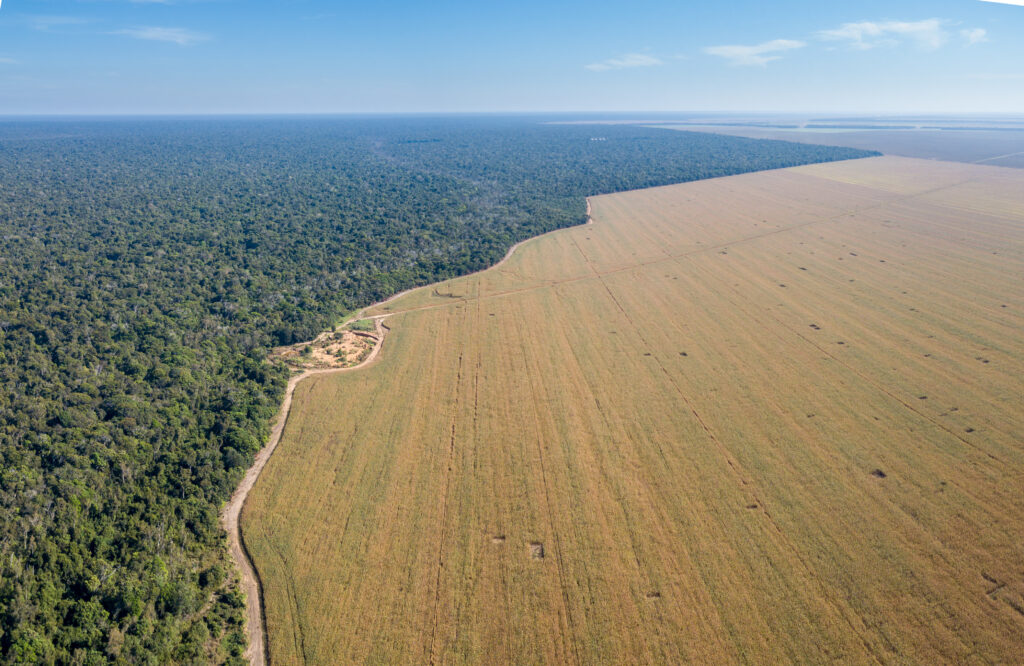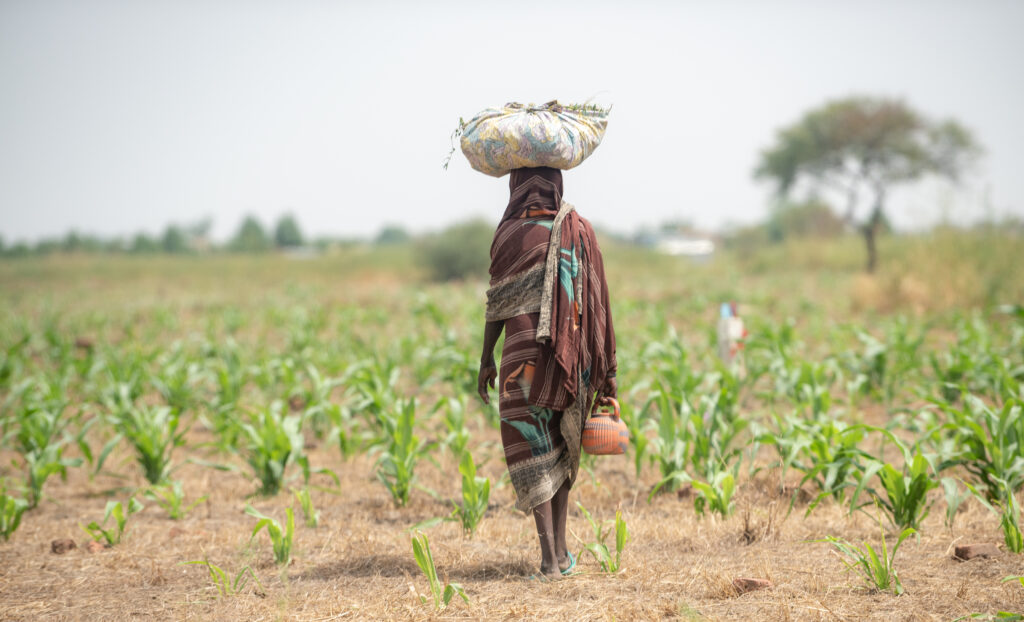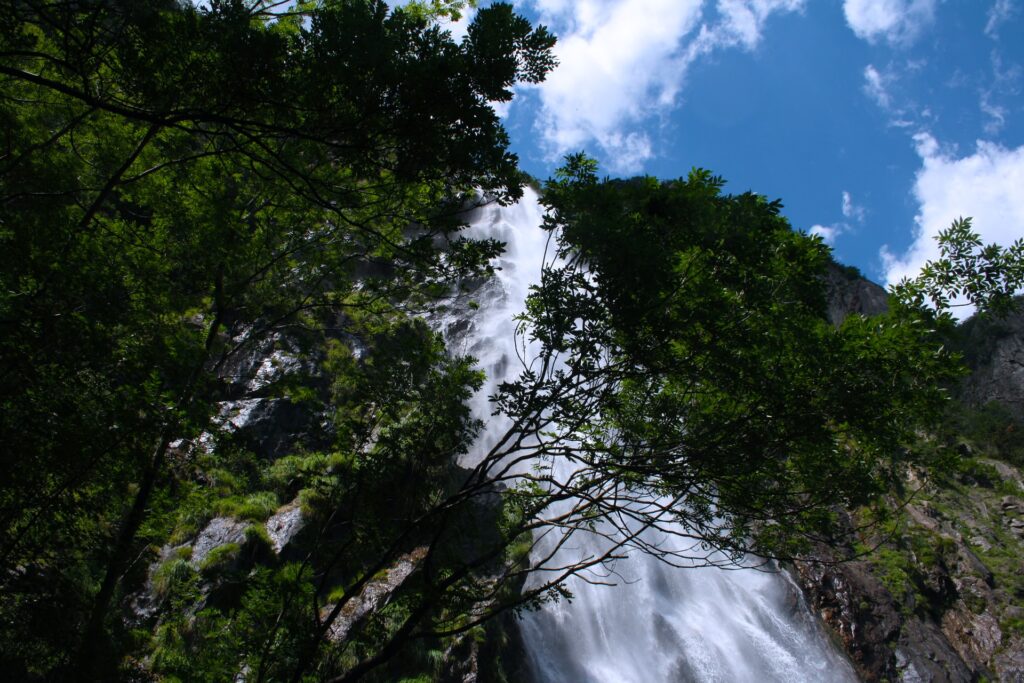

Top row, left to right: Sinéia B. do Vale, Hindou Oumarou Ibrahim, Deb Haaland
Bottom row: Tuntiak Katan, Fawn Sharp, Archana Soreng
“Climate change is not something that is going to happen. It has already happened,” said Sinéia B. do Vale of the Indigenous Council of Roraima, Brazil, speaking at the recent Leaders Summit on Climate convened by the White House.
During the two-day virtual event, she and several other participants from different countries stressed that indigenous communities and tribal peoples must be included in the conversation about solutions to climate change.
Fawn Sharp, President of the National Congress of American Indians, talked about the multiple “front-line impacts” she has witnessed as a leader of the Quinault Indian Nation in the state of Washington—including the depletion of sockeye salmon, flooding from rising sea levels, and the melting of a nearby glacier.
“Sadly, my tribal nation is not alone,” she said. “All across the country and around the world, indigenous communities share our tragic and true, very harsh reality, story, and narrative.”
“But,” she added, “we also share something else. We share centuries of timeless and ancient wisdom and knowledge on how to best confront the impacts of climate change.”
Today’s world, Sharp said, has become “completely unhinged from the values, teaching, and sense of responsibility we all share in caring for our relatives, the ocean, the forests, and the skies.” Tribal nations, she said, stand ready to “partner with the global community in an aggressive, inclusive, strategic, and bold climate action agenda.”

Agricultural terraces in the Andamarca valley, Ayacucho, Perú.
The recognition that indigenous peoples have lessons to teach the world on the environment is hardly new. Take this statement from the 1992 Rio Declaration: “Indigenous people and their communities and other local communities have a vital role in environmental management and development because of their knowledge and traditional practices.” And the Paris Agreement, adopted in 2015, states that adaptation measures on climate change “should be based on and guided by the best available science and, as appropriate, traditional knowledge, knowledge of indigenous peoples and local knowledge systems.”
But these ideas are not always implemented in practice. In different sessions at the virtual summit, several participants underscored the need to support indigenous peoples’ climate action with more funding, real consultation, and a recognition of their legal rights to their territories.
“When we talk about climate, we shouldn’t forget about territorial rights,” said Sinéia do Vale. She noted that indigenous peoples bring to the table ancestral knowledge about climate and strategies for long-term forest conservation, and their lands have often served as barriers to deforestation and environmental degradation. Such contributions make it especially important to ensure respect for their land rights, she added.

Aerial view of the territory of the Xingu Indigenous Park next to large soybean farms in the Amazon rainforest, Brazil.
That point was also made by Tuntiak Katan, a leader of the Shuar people of Ecuador and General Coordinator of the Global Alliance of Territorial Communities, a coalition of indigenous and local communities in 18 countries. Together, the communities represented by the Global Alliance occupy more than 800 million hectares of tropical forests, but their legal rights to about half of that area are not recognized, Katan said. Moreover, he said, these environmental stewards often face serious threats to their safety.
“We must stop the killing, the persecution, of indigenous peoples and guardians of the forests who are protecting the forests, the seas, the fresh water,” Katan said.
Those environmental protection efforts are becoming increasingly critical. A recent United Nations policy brief noted that although indigenous peoples account for only about 5% of the world’s population, they “effectively manage” an estimated 20-25% of the land surface, an area that coincides with 80% of the planet’s biodiversity and about 40% of all terrestrial protected areas and ecologically intact landscapes.
“Indigenous peoples therefore play a key role in efforts to protect the planet and biodiversity,” the paper said.
There are thousands of distinct indigenous peoples around the globe—each with their own identities, cultures, languages, and social practices—but one defining characteristic that binds them is a deep connection to their traditional lands and the natural world.
“For us, protection of nature, it is not a policy, it is our way of life,” explained Hindou Oumarou Ibrahim, who heads the Association for Indigenous Women and Peoples of Chad and spoke on a panel at the recent climate summit.

Farmer in an agricultural field in Chad, located in the Sahel and Sahara desert.
She said that in her own community of nomadic pastoralists in the Sahel, a semi-arid region south of the Sahara Desert, “net zero agriculture” is already a reality, thanks in part to knowledge passed down by generations of grandmothers who closely observed nature. “We use the science and traditional knowledge to build the resilience of our communities because we know how to listen from our Mother Earth,” she said.
“We indigenous peoples, we respect the Paris Agreement. Not in 2050, not even in 2030. We respect it right now,” the young activist said, adding that indigenous peoples are ready to share their experience and help build the capacity of industrialized countries in this area.
One session at the summit, led by U.S. Secretary of the Interior Deb Haaland, focused on the importance of nature-based solutions in climate action. In her remarks, Haaland—the first Native American to serve as a U.S. cabinet secretary—recalled her own upbringing on Laguna Pueblo in New Mexico, “where I learned how interconnected the world is.”
“Nature has a critical role to play in improving our resilience to climate change and creating a thriving and sustainable economy,” she said. “If we take care of our land, water, and wildlife, we can create millions of new jobs and generate billions of dollars in economic returns in the years to come.”
Haaland talked about some of the ways nature can strengthen the planet’s resilience. “We know that healthy forests capture carbon and lock it away, that the ocean absorbs heat from human-caused warming, that wetlands create natural barriers to more frequent and intense storms, and that our communities rely on the resources from our Earth to thrive,” she said.

Promoting these types of solutions, she said, will be an essential part of the Biden administration’s climate agenda. “Achieving net zero by 2050 will not be possible without nature,” Haaland said.
Recent research indicates that nature-based solutions could provide “around 30% of the cost-effective mitigation” needed by 2030 to stabilize global warming to below the threshold of 2 degrees Celsius, according to a 2019 report by the International Union for Conservation of Nature (IUCN) and the University of Oxford.
A new public-private finance initiative launched during the recent climate summit is designed to bolster a nature-based approach by protecting tropical forests. Called the LEAF Coalition (the acronym stands for Lowering Emissions by Accelerating Forest finance), the effort aims to mobilize at least $1 billion this year to provide financial incentives for verified reductions in forest emissions. It has the backing of several governments, including the United States, the United Kingdom, and Norway, as well as companies such as Airbnb, Amazon, Bayer, and Nestle, to name a few.
Several summit participants emphasized that nature-based climate solutions should keep the world’s indigenous peoples front and center. “We believe and propose that nature-based solutions must go hand in hand with community-based solutions,” said Tuntiak Katan of the Global Alliance of Territorial Communities.
It is also important for nature-based solutions to create job opportunities for indigenous youth and support their traditional knowledge and practices, said Archana Soreng, who serves on the Youth Advisory Group on Climate established by the UN Secretary-General and belongs to the Kharia tribe in India.
Nature-based solutions can be effective when indigenous peoples’ rights over their land, forests, and territories are recognized and enforced, she said, and when indigenous communities have the right to refuse development projects that would adversely affect them.
“Free, prior, and informed consent of the indigenous, traditional, and local communities should be the core to nature-based solutions and climate policies through a participatory and binding way,” she said. And, she stressed, “nature-based solutions cannot be used as the substitute for emissions reductions,” adding that countries should ramp up their climate action and aim for net zero emissions by 2030, not 2050.
“Prioritizing justice and well-being of both nature and people should be the foundation stone as we move forward from today,” Soreng said.
 View Map
View Map